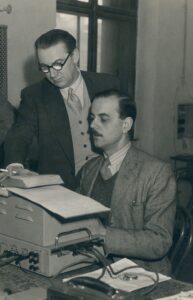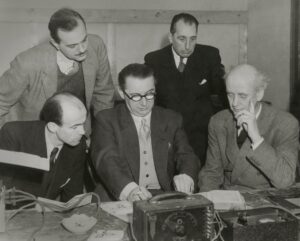
With all the focus we can give the great musicians who left us recorded examples of their artistry, it is easy to overlook those working behind the scenes. While there are producers who are known by name for some of the legendary recordings that they helped to preserve – Fred Gaisberg and Walter Legge chief among them – recording engineers tend to be less known to the general public.
Anthony C Griffith holds preeminent position amongst engineers who worked in the classical music field in the period when recordings moved from 78rpm discs to LPs. He is still lionized by recording engineers and remastering producers today for his exemplary work in the field – ‘the best of the best’. As an engineer working for EMI during the label’s heyday, much of the time under legendary producer Walter Legge, Griffith had the opportunity to work on preserving some classics of the gramophone: Dinu Lipatti’s valedictory 1950 solo recordings, Karajan’s 1950 The Marriage of Figaro, Bruno Walter’s Kindertotenlieder with Kathleen Ferrier, and a host of Sir Thomas Beecham’s and Sir Adrian Boult’s classic discs. He also was peerless in his work remastering and making available historical recordings on the World Record Club label for some 13 years – half a century later, some of his transfers of 78s still sound as good if not better than similar work that has been done since.

The two recorded interviews with Griffith that are shared below, as well as the incredible photographs on this page, were graciously provided by his daughter Vanessa, to whom we offer our sincerest thanks; these invaluable documents help give more insight into his exceptional work in the field. In these conversations, he speaks with eloquence and insight, articulating his deep understanding of both the technical and human elements that are required to bring musical performances to life.
The first interview, presented on Radio Devon on September 2, 1984, finds Griffith sharing a number of fascinating recollections from his extensive career recording some of the greatest musical luminaries of the 20th century. In this engaging conversation he provides some insightful details about the recording process and discusses the ‘magic’ that can occasionally be captured – but regrettably often not – in studio recording sessions as opposed to what can be experienced in live performances. Included in this presentation are excerpts of a few of the legendary recordings whose sessions he had engineered.
This 1988 Lincoln in America radio program features an interview with Griffith that was recorded at his home in Torquay. With several musical examples, Griffith regales the listener with fly-on-the-wall stories about great musicians and some of their legendary recordings, as well as his thoughts on microphone placement and recorded sound – his story about Furtwängler and his thoughts of microphone location is a fascinating one.